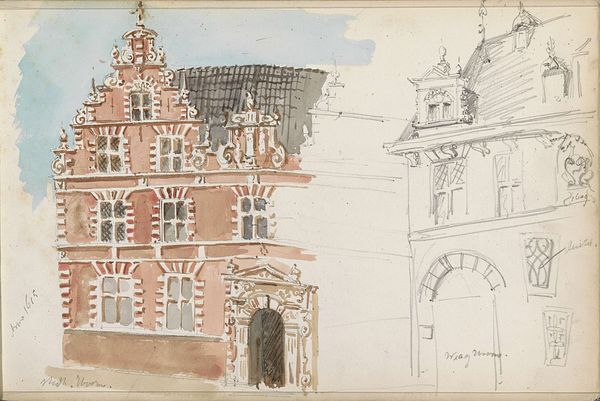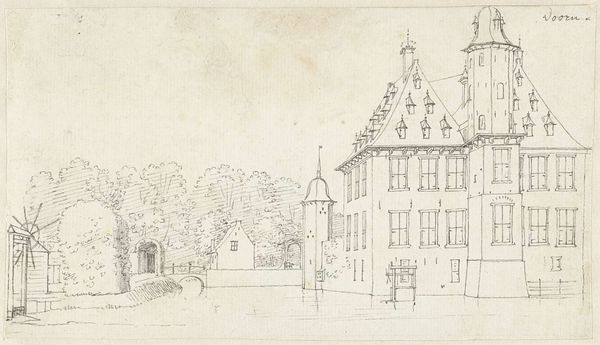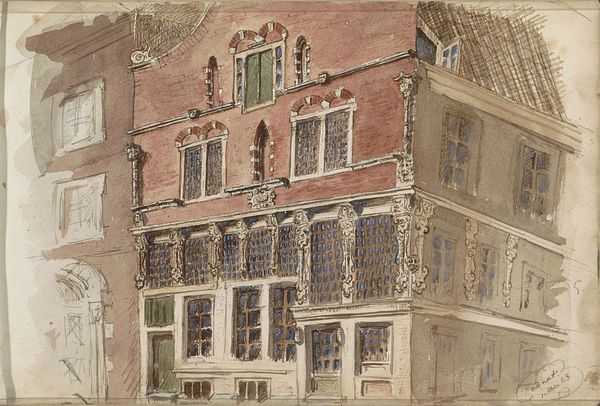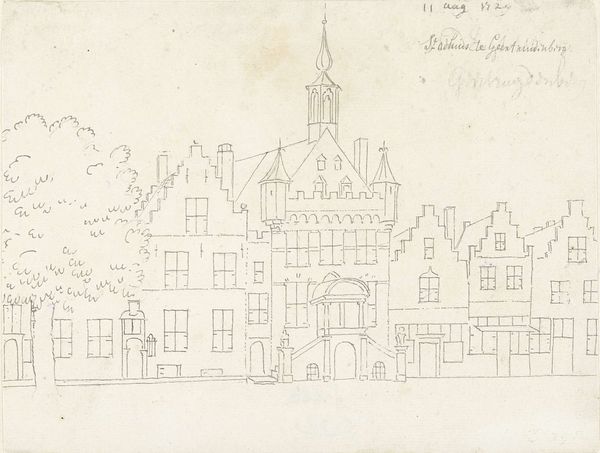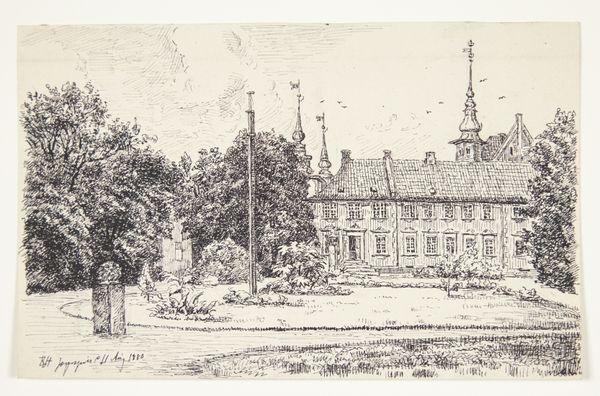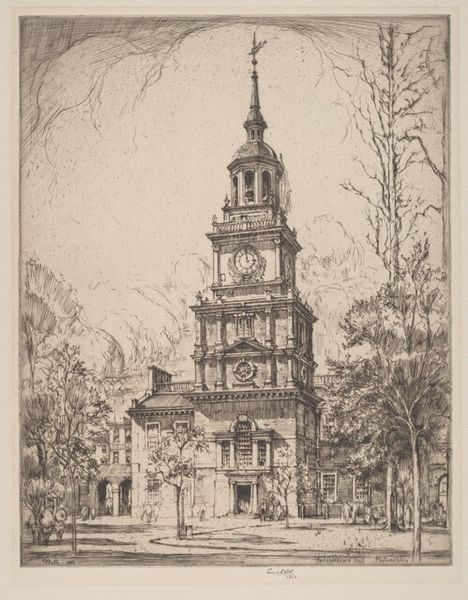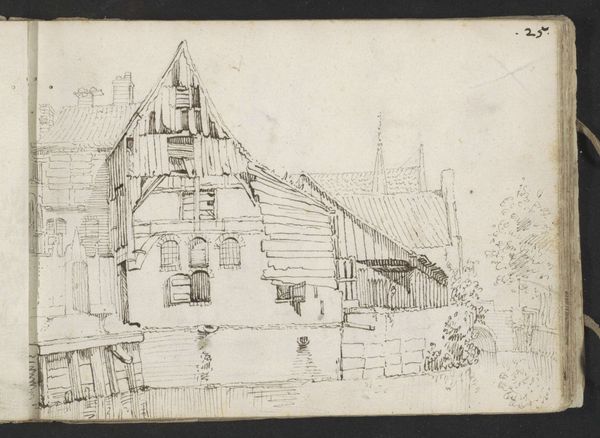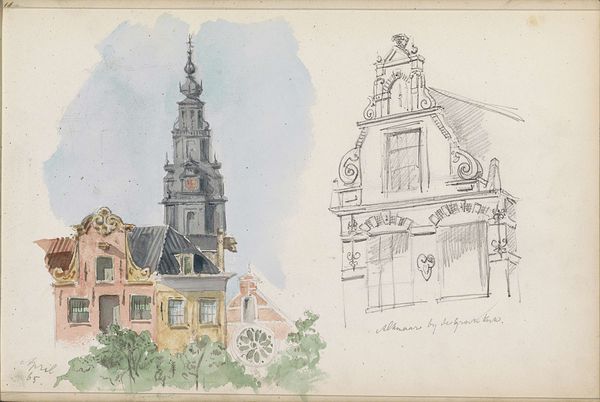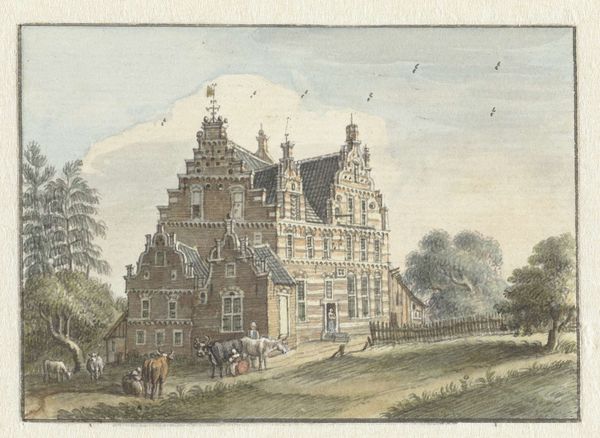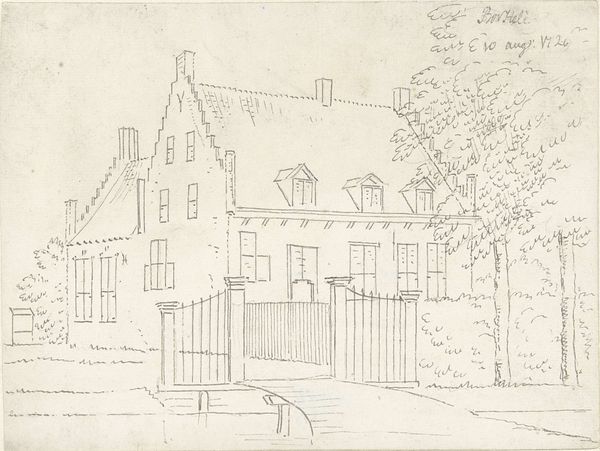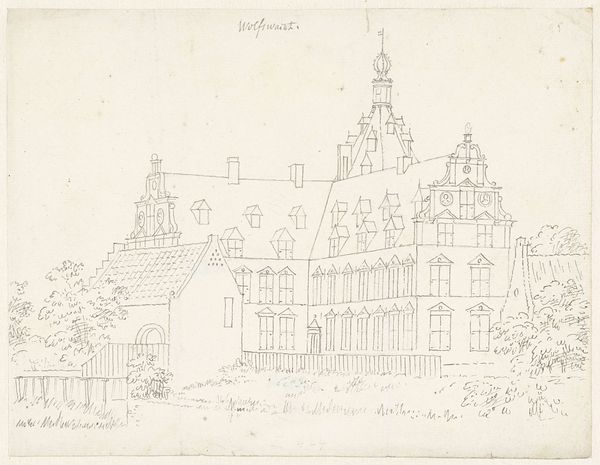
drawing, watercolor, architecture
#
drawing
#
dutch-golden-age
#
landscape
#
etching
#
watercolor
#
architecture drawing
#
cityscape
#
watercolor
#
architecture
#
realism
Copyright: Rijks Museum: Open Domain
Curator: This watercolor drawing, "Stadhuis van Naarden," by Isaac Gosschalk, was completed between 1862 and 1867, showcasing the architecture in a Dutch cityscape. Editor: It strikes me as a scene captured in transient form, incomplete yet evocative. The muted palette and sketch-like quality grant a ghostly atmosphere, as though peering through time. Curator: The composition directs the eye along the strong verticals of the buildings, particularly that central structure with its prominent stepped gable—an archetype of Dutch Renaissance architecture. The contrasting levels of detail is fascinating; some areas are heavily rendered in watercolor, while others exist merely as ghostly pencil outlines. Editor: Note the symbols of civic pride embedded in the architecture; this town hall is rendered as more than a building, as a stage for social rituals. The bare tree seems to be watching the human comings and goings, too, giving the scene an additional layer of witness and memory. Curator: We can look more closely at how Gosschalk used layering. Notice how the facade of the most prominent building almost floats from its sketch-like surrounding elements due to its intense red against the flat, unmodulated sections of the image. This contrast brings architectural facade immediately forward. Editor: The incomplete rendering enhances its symbolic qualities, like a shared memory only partially recalled. The town hall, both present and suggested, gains further meaning; this location stands both in material and spiritual history. The architectural shapes signify strength but lack definite color. Curator: Certainly, that absence enhances a particular reading. Still, consider how Gosschalk plays with line and mass, generating interest through structured, rhythmic applications of color across architectural features. A network of shape and depth emerges, revealing itself upon closer consideration of the material composition. Editor: I suppose the symbols might not resonate without understanding this historical presence, that this Dutch town, still visible, provides continuity within that context and memory through image. Curator: A beautiful way of considering this artwork’s effect, reflecting how Gosschalk encourages us to decode meaning by examining constructed compositions. Editor: It seems like more than bricks, stones, colors. Instead, history, collective and personal, intertwines and reflects the story behind this captivating building.
Comments
No comments
Be the first to comment and join the conversation on the ultimate creative platform.
